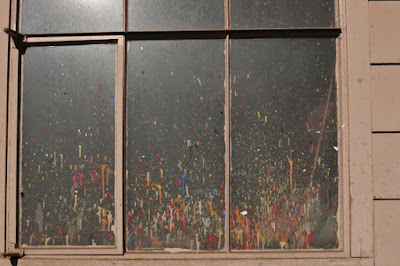DOORS & WINDOWS
The thought of photographing doors and windows may sound boring and mundane. However, if we pick the right doors and windows, they are anything but boring. Some doors leave messages for us to interpret, some look mysterious, some lead us into their inner soul, and some can be pretty artistic. They're out there--we just need to take the labels off and see what's left for us to photograph. Let me show you what I mean.
Here are some examples from my travels in Texas, Colorado, New Mexico, Arkansas, and Oklahoma. What's fun about them is that every viewer will have his/her own interpretation, thoughts, and feelings about these doors. What are yours?
My first three are from New Mexico, starting with this one. According to Native American-related information I have read, the color blue is supposed to keep away evil spirits. I have seen several in Taos and Santa Fe. I found this one along Canyon Street in the art district of Santa Fe.
I found the following two in Taos, New Mexico.
I saw these two doors on the exterior walls of a historic hacienda. I loved the adobe texture, the color, and that huge pot in the middle. The left door, slightly ajar, adds mystery--why is it partly open? Is there someone inside? What's inside?
I loved the way the blue door in the Taos Pueblo was partly hidden from view.
This poor door in Broken Bow, Oklahoma was being consumed, taken over, by the surrounding vegetation. You can hardly see it!
These next two are artistic. Someone decided to create art from something as simple as a door.
I loved the palm tree on the door I found in Texas. The door had a lock, and even what appeared to be a maildrop.
I found a palm tree door in Texas, and a cowboy door in Marble, Colorado. Creative, and fun.
This haunting window was barely hanging on to an aging building in St. Joe, Arkansas. I visited the place two decades later and the entire building was gone! When I photographed it, a local man told me the building had once been a motel, a retail store, and a place where "they" grew marijuana. Who knows the real truth. Regardless, I'm glad I captured its history before it became history.
This was once a power plant in Eureka Springs, Arkansas. I loved the surrealism of this scene. After years, perhaps decades, of abandonment, the outside was inside.
This is a different kind of window-- looking through the window of a 1940s pickup.
With the old wooden wagon in the background, it was like looking at history through history.
I was in the middle of 1-on-1 field lesson with a student in Hygiene, Colorado when we both saw a window almost at the same time. Before I had a chance to say anything, she yelled out as she stared at the window, proclaiming that that (the window) was the kind of thing she is attracted to, but just didn't know what to do with it. I told her what we were going to do.
This is the window we both saw. Not much, huh? She wanted to do something with what she saw with her eyes. I taught her how to extract the hidden art in the splattered paint on the inside of the window, by seeing, not with our eyes, but our imagination. First, composition. I suggested we close in on the middle window because it had some interesting, art-like, abstract patterns. Then I told her that in order to make those patterns "pop," we were going to severely underexpose the scene---by an unbelievable 2-stops! That's equivalent to saying. that we are going to give the middle window 200% less light than the built-in light meter thinks we need. She wasn't sure it was going to work, but, at the end of the shoot we ended up with almost identical images.
And this is what we ended up with--a total abstract from paint splattered on a window. It looks like a Jackson Pollock painting.
My last two examples are both from one single mission: Concepción Mission in San Antonio, Texas. It is part of a trail of historic Spanish missions in the city.
In order to get the best exposure balance between the light hitting the exterior doors and darkness of the room inside, I had to make some careful left brain calculations. I took a "reading" of the interior room wall, then took a reading of the exterior walls. I then used an exposure setting that was in-between those two extremes, and voila! Here is a hypothetical example to help explain what I mean: Let's say the reading on the interior wall gave me 1/30 of a second and the exterior doors gave me a reading of 1/250 of a second. The middle of that range is roughly 1/90 of a second, which is what I would use, then fine-tune it later.
This door, or doorway, was inside this same Spanish mission. I loved the way the sunlight highlighted the floor along the hallway. Taking the scene from this perspective gave the scene a sense of extreme depth, which gave a three dimensional feel to the flat surface of a photo.
So, don't let your mind convince you that doors and windows are just that--doors and windows not worth your attention. You might be missing out on some great photos on your walls! They are souls to the past. Have fun!













Great article by the great author, it is very massive and informative but still preaches the way to sounds like that it has some beautiful thoughts described so I really appreciate this article. Best Newborn digital backgrounds service provider.
ReplyDelete